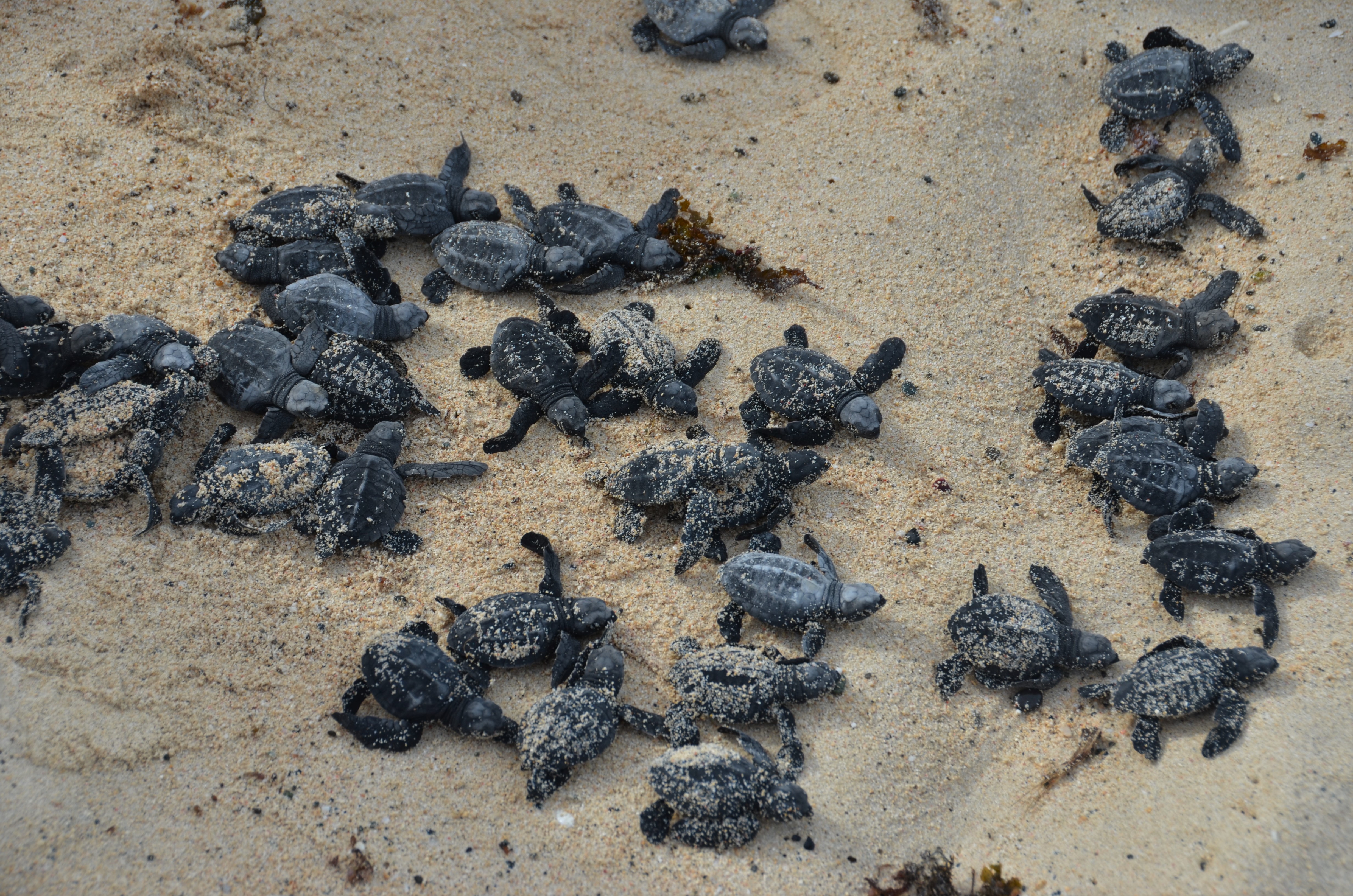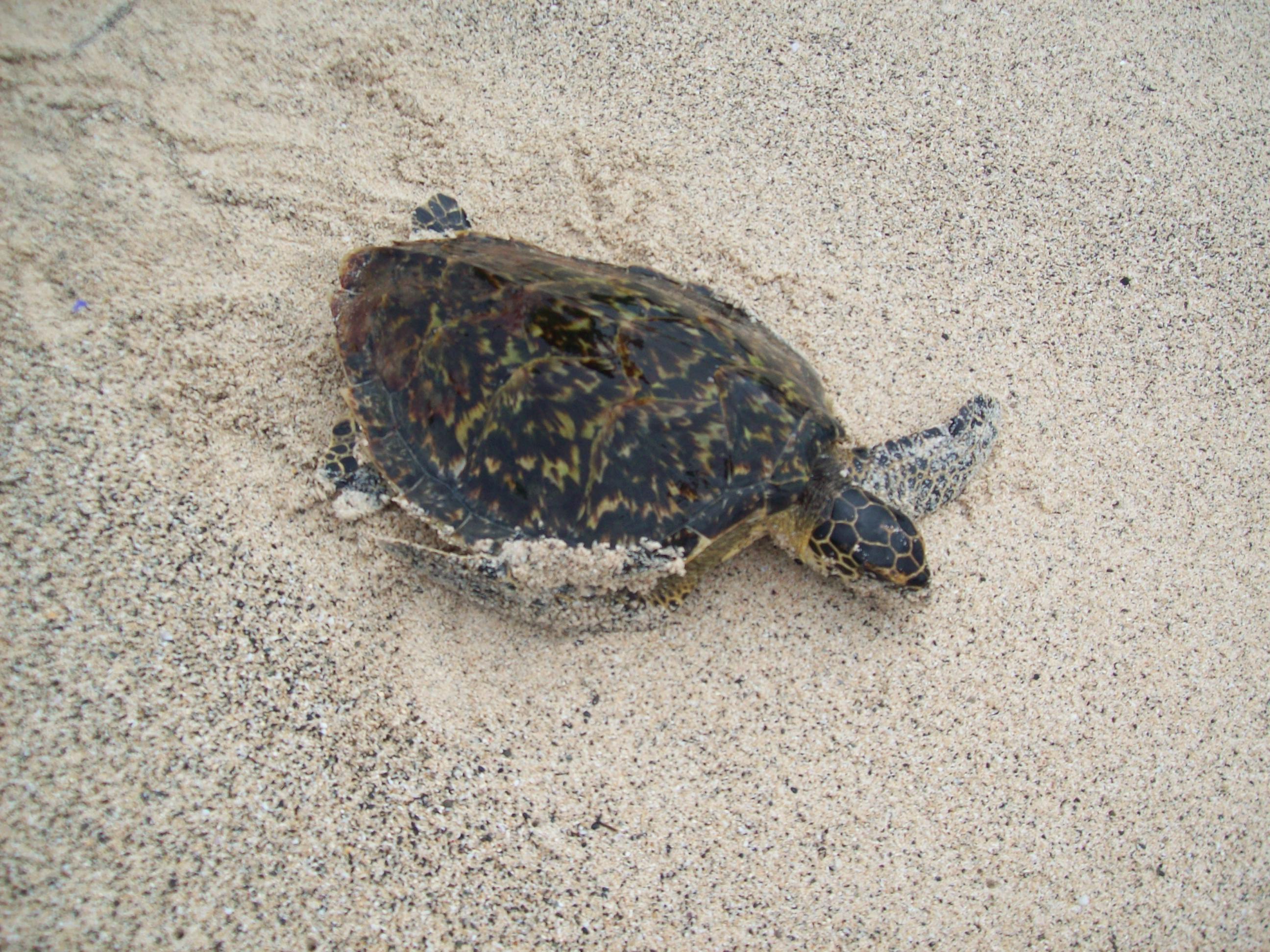Endangered marine turtles: How coastal ecotourism threatens these ancient creatures
By Henrylito D. Tacio
The Philippines – an archipelago that comprises 7,641 islands, including the triumvirate Luzon, Visayas, and Mindanao – is noted for its fine white sand beaches. Tourists, either foreigners or locals, are also captivated by the exceptional marine animals teeming its waters.
Among these marine animals swimming in Philippine seas are marine turtles, locally known as “pawikan.” Of the seven species of marine turtles the world has known, six of these species can be found in Southeast Asia.
The Philippines is fortunate to have five species, according to the Department of Environment and Natural Resources (DENR). These are: green turtle (Chelonia mydas), hawksbill turtle (Eretmochelys imbricata), olive ridley turtle (Lepidochelys olivacea), leatherback turtle (Dermochelys coriacea), and loggerhead turtle (Caretta caretta).
Three species – green, hawksbill, and olive ridley – are widely distributed throughout the country. Leatherback turtles often forage around Palawan, Central Visayas, Bicol, and the Davao Gulf. Loggerhead turtles, which nest in Japan, come to the country to forage in the waters of Basilan and the Bicol Region.
“Marine turtles occupy various ecosystems of the Philippine seas including our beaches for nesting, coral reefs and seagrass beds as feeding areas, and open seas as migratory corridors,” said Dr. Arnel “AA” Yaptinchay, founder and director of the Marine Wildlife Watch of the Philippines (MWWP).
It may be more fun in the Philippines, so goes the former slogan of the Department of Tourism. But if only those endangered marine turtles could speak just like human beings, they will definitely tell you that it’s not.
“Tourism in natural places that does not take into account the effect they have on the environment is the threat,” Dr. Yaptinchay explained “In the Philippines, where it seems that every inch of our beaches will soon be developed for tourism, this will become a big threat for marine turtles.”
Declining population
According to MWWP, as many as four different species have nesting sites all over our coast. But in the past decade, their population has declined by as much as 80%.
“All (of the marine turtles in the country) are threatened with extinction with the green, olive ridley and loggerhead classified as endangered and the hawksbill and the leatherback as critically endangered. This means that things are not looking good for their populations,” said Dr. Yaptinchay.
There are so many reasons why their numbers are declining. But ecotourism – whose objective is supposedly to minimize the impact brought about by tourism on the environment – is consequently one of them.
The booming tourism industry in the country has helped in the proliferation of buildings being constructed near the seashores and beach coastlines.
Dr. Yaptinchay said development of the coast where buildings are to be constructed will displace marine turtles from one of their most important life cycle habitats, referring to the nesting beach.
“Lights, infrastructure, noise, domestic animals, and pollution will not only disturb those nesting females but also their hatchlings,” he said. “Marine turtles will not nest when disturbed.”
Nesting sites
Marine turtles spend most of their life in the sea and get all the things they need for their survival. They even mate in the sea. But when the time comes to lay their eggs, the females return to shore, usually in the same place where they were hatched.

“If you imagine a first-time nester approaching its place of birth, how much do you think of its birthplace or nesting beach remains over the last 35-50 years?” Dr. Yaptinchay asked. “I would guess there would be very little space left for it to nest and enough disturbance developed to shoo it away. We are preventing them from fulfilling their life purpose. For me this is very tragic.”
In some instances, some tourism facilities view marine turtles as attractions.
“This is fine if you view marine turtles from a distance, but most (beach owners) are greedy and would take a turtle and put it in a tank for secured viewing for their guests,” said Dr. Yaptinchay.
But what he considered as worrisome is when beach owners would tie the turtle to a tree. “This has happened (before) and (I think it) is still happening,” deplored Dr. Yaptinchay.
These resorts located in islands sometimes think they are helping marine turtles by keeping hatchlings in containers and allowing them to grow for a few months before releasing them into the open seas.

“What they do not realize is that they have just disrupted the whole life cycle of the turtles,” Dr. Yaptinchay said. “Hatchlings are supposed to be in open pelagic waters for the first decade of their lives. Again, an important phase in their lives is affected.”
Marine turtles are more important
However, Dr. Yaptinchay believes there are still ways to develop tourism without compromising the integrity of the environment.
“Technology and knowledge already exist,” he said. “We just need to learn to give the environment more importance than the money we earn.”
According to Dr. Yaptinchay, his organization is working with the tourism department in developing interaction guidelines for tourists, resorts, and dive operators to prevent disturbance to marine turtles.
Throughout the years, MWWP has been involved in the research and conservation of marine turtles in the country. “MMWP promotes awareness on marine turtles and other marine wildlife through various venues including our social media, talks and conferences, and training,” Dr. Yaptinchay said.
“To help communities respond to encounters, we have developed manuals for marine turtle reports found at the beach, in water, or when they are caught in nets,” he continued. “We also provided inputs to national policy such as the Philippine Biodiversity Strategies, regulation of marine wildlife tourism interactions, and the marine turtle conservation action plan for the Philippines. It is hoped that through collective efforts, we are able to ensure that marine turtles thrive in the Philippine seas.”
Since time immemorial
Marine turtles belong to the order Chelonia, an order of reptiles that has existed and flourished since prehistory with very little change in their basic structure.
“Marine turtles have been in the Philippine seas even before migration and human settlements in our archipelago,” Dr. Yaptinchay said. “We need somehow learn to co-exist by adjusting our ways to accommodate their existence – because they will never adjust to ours.”
Since 2001, hunting, sale and killing of marine turtles have been banned in the Philippines. The Wildlife Conservation Act, or Republic Act No. 9147, penalizes violators with a fine of up to P100,000 and one year in jail.
“All marine turtles are already fully protected by law in the country and this needs to be strictly implemented,” Dr. Yaptinchay suggested. “All human activities and development need to be strictly regulated in marine turtle habits.”
Saving marine turtles
Despite sincere efforts by the government and some environmentalist groups to save marine turtles from extinction, the decimation of the endangered species continues unabated.
“To truly restore populations and allow them to thrive, we need to focus on the last remaining places where there are healthy populations and create protected areas and a network of these areas where they can fulfill their migratory life cycle,” Dr. Yaptinchay said.

If Filipinos fail to save marine turtles from extinction, the country may not have these ancient creatures inhabiting its waters. If that happens, “aside from becoming boring, lifeless and uninteresting, the unhealthy Philippine seas will not be able to provide us with the full range of ecosystem services we expect which are important to address problems such as climate change impacts and food security that could threaten our very existence.”
Photos by Henrylito D. Tacio